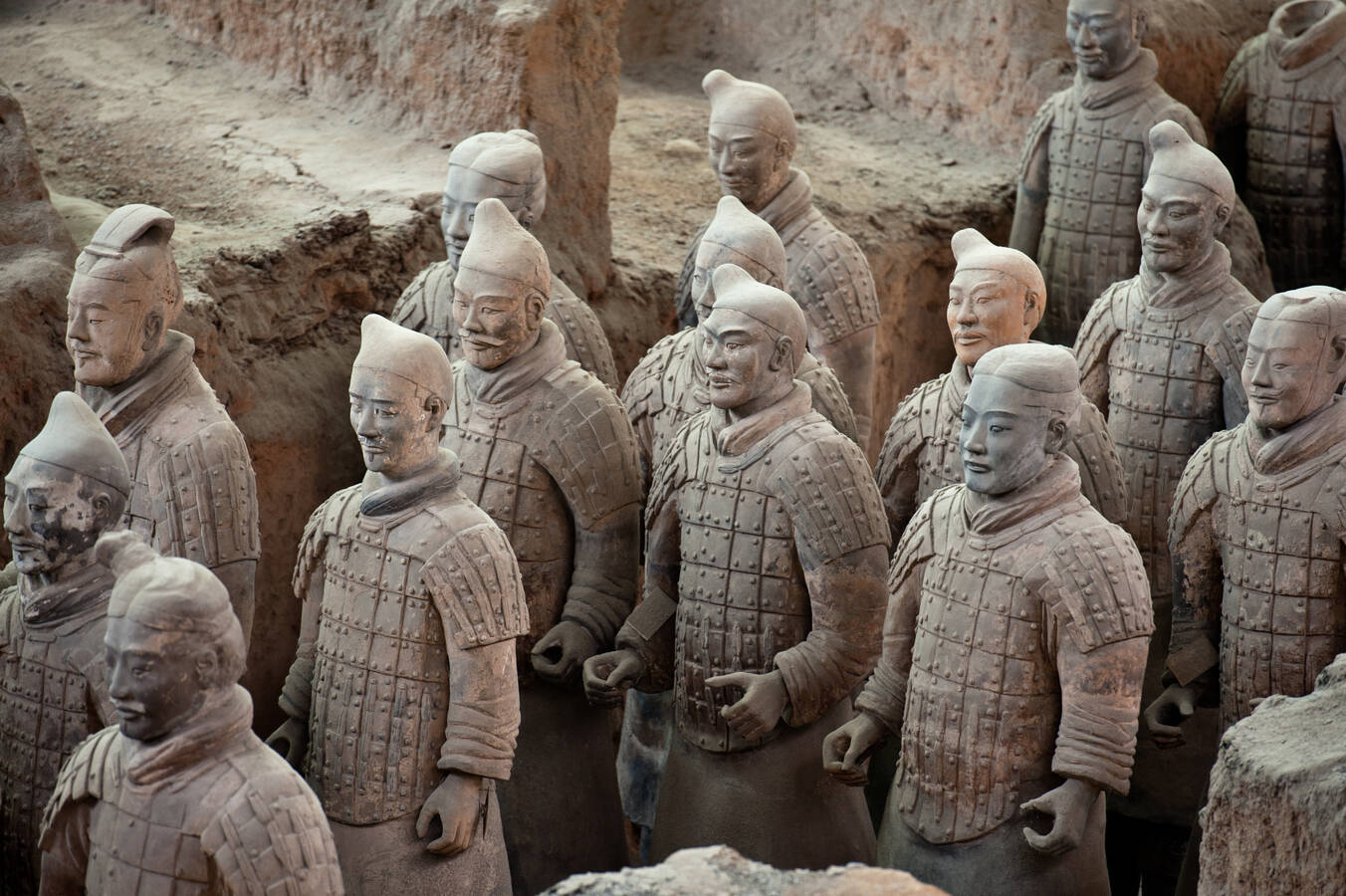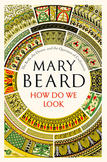
Idols, icons, images, illusions: Reviewing Mary Beard’s ‘How Do We Look’
In 1969, the British art historian Kenneth Clark presented a new television show, “Civilization,” to the world. It was broadcast on both sides of the Atlantic (by the BBC and PBS) and quickly became an educational classic. It was, like so much history of its time, built on assumptions about the ascent and superiority of Western culture. The accompanying book has never been out of print, and it continues to be lauded as a tour de force. In 2015, a sequel—with the hopefully plural title Civilizations—was announced. This time, three presenters were slated to take the reins; the illustrious Mary Beard wrote and presented two of the opening episodes. How Do We Look is the print manifestation of and accompaniment to those televised episodes.
It is, at its heart, not a book about art, but a book about how we look at art. It is an attempt to provoke more thought about how it is that people receive, are shaped by and then shape the art that confronts and surrounds them.
Over the course of her career, Mary Beard—a professor of classics at Cambridge University—has built a remarkable and multifaceted academic empire. She is the author and co-author of seminal academic works through which every faithful graduate student in classics and ancient religion must plough, a breezy and entertaining blogger, an engaging television personality, and the author of best-selling crossover books like SPQR and Women & Power.
How Do We Look is, at its heart, not a book about art, but a book about how we look at art.
The book itself is “unashamedly selective,” to quote Beard herself, when it comes to its subject matter. Rather than religiously following chronology, it is organized around two central themes: the portrayal and role of the body; and the depiction of gods and God. Part One (the body) begins in Mexico with the distinctive and striking 3,000-year-old Olmec heads. In subsequent chapters we move to Roman-era Thebes, through the funerary art of Hellenistic Egypt, the singing statue of Memnon, and on to the terracotta army that guards the tomb of Qin Shihuangdi in the Shanxi Province of China. Along the way we learn about revolutions in Greek artwork that produced representations of bodies in motion and the legendary birth of portraiture.
Part Two, which sheds light on religious imagery and portrayals of divinity, begins in Angkor Wat, moves to the famous Ravenna mosaics, worries about the excesses of the Nativity scene at the Scuola di San Rocco and grazes the skirt of the Virgin of Seville. The Blue Mosque of Istanbul represents Islam, and the Kennicott Bible serves as our entree into the elaborate illustrations of Jewish scribes before we plunge into the iconoclastic impulses of a Byzantine emperor and the Protestants of post-civil war era England.
Historical excursuses, almost imperceptibly woven into the fabric of the book, provide learning opportunities for the reader. In one powerful example, Beard introduces the uninitiated to Johann Joachim Winckelmann, a German art historian whose writings promoted the idea that “the best art...was made at the time of the best politics” and whose work placed Greek and Greek-styled sculpture at the apex of human politico-artistic achievement.
Mary Beard’s unparalleled ability to synthesize ancient evidence and modern scholarship into vivid retellings of the ancient world is on display throughout How Do We Look.
She then traces the legacy of Winckelmann’s writings to the “Olmec Wrestler,” a statue in the Museo Nacional de Antropología in Mexico City. Nothing about the statue itself, Beard notes, suggests that the figure is a wrestler, but viewed through the lens of Greco-Roman art and culture, the statue was reconceived (and even titled) in accordance with Western ideals. The reshaping of this statue by colonial expectations has even led some to argue that the piece is a forgery. It is connections and observations like these that make the book worthwhile reading.
Beard’s unparalleled ability to synthesize ancient evidence and modern scholarship into vivid retellings of the ancient world is on display throughout the book. She moves seamlessly among art, ancient history and scholarly commentary, working scraps of evidence into rich stories in a manner that can only be described as alchemic. Her ability to connect rock to chisel means that we can glimpse both the artisans who first produced the masterpieces under discussion and their viewers.
The book is delightfully easy to read and unfailingly thought-provoking. But it has an aimless quality because it has no overarching argument. For Clark, the advantage and power of the master narrative was that it served as a structuring device for his series. In eschewing this, Beard’s version sometimes reads like a series of unconnected but fascinating observations. The transitions and links between chapters are often elegant; occasionally, though, they feel forced. Beard herself is aware of the problems that writing a thematic rather than a chronological work can pose. It is a sacrifice she is willing to make.
In How Do We Look, Mary Beard deliberately shifts our attention from the “genius” artist to the viewer or, as she puts it, to the “consumer.”
An additional—and unavoidable—problem with a book like this is the way the focus on particular artifacts exoticizes the objects themselves. The dressing up of the statue of the Virgin of Seville is used to highlight the considerable resources poured into Catholic artwork and expose the blurriness between idols and icons. But while Beard notes the historic practice of dressing statues, she does not mention the broader Catholic practice of dressing their Virgins, a practice that continues to this day in modern Spain. Similarly, Beard instructively mentions the powerful effects of the darkness in the caves of Ajanta, in northwest India, but the same use of darkness can be found in temples in Myanmar, among other places,. The specificity of focus sometimes blurs the landscape of practice.
The fault lies, however, not in Beard’s execution but rather in the nature of the task. Even with a book so squarely focussed on two general themes and a handful of supporting sculptural players, it is impossible to do justice to even one piece. But ultimately, Beard is writing not a history of art, but a history of thinking about art.
In the book’s Afterword, Beard outlines the ways in which her own book and perspective differ from those of Clark. Unlike her predecessor, she includes a number of fascinating and historically important women. None of these women are strong-armed into the book. The daughter of Boutades, who is credited with the invention of portraiture, is used to demonstrate the point that art keeps “a person’s presence” in our world. She includes a wider selection of images, drawn from outside Europe as well as within, but most notably she deliberately shifts our attention from the “genius” artist to the viewer or, as she puts it, to the “consumer.”
Even so, the shadow and risks of colonialism loom over any project that touches on the broader construction of the history of art. And as Beard herself writes, “The problems of a European or western focus are not simply ‘solved’ by including non-western art.” Beard, who herself has been criticized for speaking from a colonial position of privilege, describes her involvement in this project as “eye-opening.” And indeed there are plenty of talented non-white academics who work as much-needed yet unrewarded pioneers in this space, highlighting for colleagues and students (like myself) the various ways in which scholarship continues to operate by a colonial logic.
How Do We Look is, in the end, a book about the viewer as well as the viewed. It prompts us to think about how we construct our sense of civilization and the troubling ways that artistic depictions of the human and the divine serve to cement bias and, sometimes, provoke violence.
This article also appeared in print, under the headline “Idols, icons, images, illusions,” in the October 1, 2018, issue.










